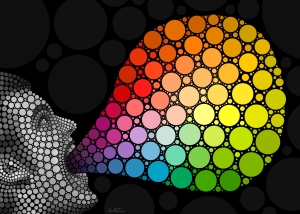Swedish cuisine in later years has acheived critical aclaim and is considered trendy, healthy and modern by many foodies around the world. But, like every kitchen, the Swedish kitchen has some real humdingers lurking behind the trendy facade of smoked slmon, creme fraiche and fresh dill. Here, in reverse order, is my list of the 5 most revolting foods that Sweden has produced. Yuck!!
 5: Messmör – Soft whey butter
5: Messmör – Soft whey butter
Translated as soft whey butter, this disgusting sandwich topping and comes in two delightful choices: goat milk-based and cow milk-based. Whey is pressed out from cheese and then boiled until it caramlises and gets an unappetising brown colour. It looks nasty and tastes revolting.
 4. Blodsoppa – Blood soup
4. Blodsoppa – Blood soup
Blood soup is a soup made of stock and goose blood which is thickened and flavoured with syrup, wine, cognac, vinegar, cloves, ginger and pepper. It is traditionally eaten with a roast goose dinner and it dates back to the Renaissance period. Historically, probably it was a useful source of iron, but in modern Sweden it just feels babaric and, well a little vampire-like. Maybe this is how Swedes get through the long, dark nights without biting each other’s necks?
 3. Palt – Potato and pork dumplings
3. Palt – Potato and pork dumplings
Palt is a kind of gross potato dumpling stuffed with boiled pork. The dumpling is boiled in very salty water. It is normally eaten with butter and lingonberry jam and Swedes drink milk when they eat it just in case it doesn’t already slink down the throat. It is similar to another dish that Swedes eat called ‘body cakes’ which are just as nasty as they sound.
 2. Surströmming – fermented Baltic herring
2. Surströmming – fermented Baltic herring
This offensive dish consists of herring that is caught just prior to spawning and packed into a tin of brine to ferment. The fermentation starts from an enzyme in the spine of the fish, together with bacteria. Hydrogen sulphide is produced in the tin. Sounds appetizing? The salt in the brine allows the bacteria responsible for rotting to thrive. This bacteria prospers and decomposes the fish, making it sour. When the tin is opened, the contents release a strong and sometimes overwhelming odour which smells like human excrement. The dish is ordinarily eaten outdoors as the reek will fill out an entire building if eaten indoors. The fish is usually eaten on crispbread, or rolled in thin bread, with potatoes and sour cream. This way of preparing food was historically a process of preserving food in order to survive through the winter. But in modern-day Sweden, it is so unnecessary – now we have fridges!!!
 1. Lutfisk – Sodium Hydroxide fish
1. Lutfisk – Sodium Hydroxide fish
Imagine your mouth full of jelly. Wobbly, quivering jelly. Now add a creamy sauce to that consistency. Slush it round in the mouth. Now add the flavour of fish! And there you have it! Lutfisk! This revolting food is a dish consisting of dried whitefish prepared with lye (deadly sodium hydroxide) and a sequence of particular treatments. The first treatment is to soak the dried stockfish in cold water for five to six days. The saturated stockfish is then soaked in cold water and lye for an additional two days. The fish swells during this soaking, and produces a jelly-like consistency. When this treatment is finished, the fish (saturated with lye) is caustic and therefore poisonous. To make the fish edible, a final treatment of yet another four to six days of soaking in cold water is needed. Eventually, the lutfisk is ready to be boiled and then served with a creamy spiced white sauce and potatoes. This has to be the most vile thing I have ever eaten, it is truly repugnant. The good news is however that Lutfisk is a Christmas dish, so it only ever gets dumped infront of you once a year! Thank Santa for small mercies!
 A practical Swedish electric advent calender to light up the darkness
A practical Swedish electric advent calender to light up the darkness 











